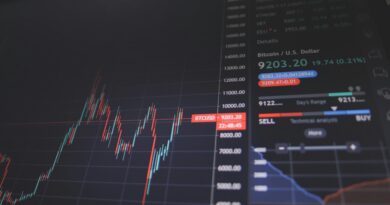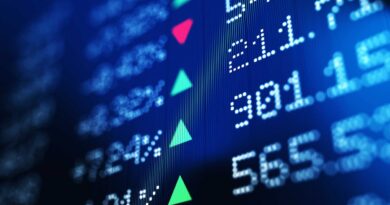Stock Market Today: Top 10 things to know before the market opens on 7th September
The benchmark Sensex and Nifty indices are likely to open marginally lower on September 7 as trends in the GIFT Nifty indicate a negative start for the broader index with a loss of 38 points.
The BSE Sensex climbed 100 points to 65,881, while the Nifty 50 dropped 31 points to close at 19,543 in the previous session amid volatility and formed a bullish candlestick pattern with a long lower shadow and minor upper shadow on the daily charts.
Technically, this pattern reflects high volatility in the market.
The upside breakout of trend line resistance remains intact.
Hence, “the short-term trend of the Nifty continues to be positive.
One may expect further upside in the coming sessions and any dips down to the support of 19,500 is likely to be a buy-on-dips opportunity,” Nagaraj Shetti, technical research analyst at HDFC Securities said.
The next upside levels to be watched are around 19,800, he feels.
The pivot point calculator indicates that the Nifty may be taking support at 19,524 followed by 19,490 and 19,435.
On the flip side, 19,635 can act as the key resistance followed by 19,669 and 19,725.
Stay tuned to Moneycontrol to find out what happens in the currency and equity markets today.
We have collated a list of important headlines across news platforms, which could impact Indian as well as international markets.
GIFT Nifty
The GIFT Nifty indicates a marginally negative start for the broader index with a loss of 38 points.
GIFT Nifty futures stood at 19,625 points after making a high of 19,720 points.
US Markets
Stock futures were little changed late Wednesday as renewed concern swirled on Wall Street over the course of the Federal Reserve’s interest rate policy, and whether policymakers will enact another hike this year.
Futures tied to the Dow Jones Industrial Average fell 28 points, or 0.08 percent.
S&P 500 futures ticked down 0.07 percent while Nasdaq futures declined 0.1 percent.
Technology stocks were the biggest underperformer during regular trading hours, with the Nasdaq Composite closing 1.1 percent lower and notching a third-consecutive losing session.
The tech-heavy index was dragged lower by a more than 3 percent decline in both Apple and Nvidia.
Higher Treasury yields added pressure to tech stocks and added to investor worry that the Federal Reserve will use recent stronger-than-expected economic data to justify pushing benchmark lending rates higher to squelch inflation.
The yield on the 2-year Treasury note added as much as 6 basis points Wednesday.
The Institute for Supply Management’s U.S. services index climbed to a six-month high in August, while the price segment ticked up to 58.9%, a report Wednesday showed.
The ISM index’s price barometer hit a four-month high.
European Markets
European stocks closed lower Wednesday, as investors focused on the oil market outlook and inflation concerns after Saudi Arabia and Russia extended a set of voluntary oil supply cuts to the end of the year.
The regional Stoxx 600 index ended 0.6 percent lower, with most sectors in negative territory.
Household goods led losses, down by 2.2 percent, followed by banks, which dropped 1.5 percent.
Saudi Arabia will extend its production cut of 1 million barrels per day until the end of December, while Russia will reduce its oil exports by 300,000 barrels per day.
US indexes were lower as the rise in crude oil prices weighed on stocks, while Asia-Pacific markets were mixed.
Brent crude futures traded at $89.94 a barrel around the market close in Europe, having closed above the $90 mark for the first time since November in the previous session.
US West Texas Intermediate crude futures were little changed from the 10-month high hit on Tuesday, which was $86.87 a barrel.
Investors will be watching for US data from the composite Purchasing Managers’ Index and ISM non-manufacturing PMI; and for Federal Reserve notes out at 2 p.m. Eastern time.
Asian Markets
Asia-Pacific markets were mixed on Thursday, following a sell off on Wall Street and ahead of trade data from China and Australia. Chinese imports and exports for August are forecasted to fall 9.2 percent and 9 percent year-on-year, respectively, according to a poll of economists by Reuters, which is smaller than the 14.5 percent and 12.4 percent drops in July.
In Australia, the S&P/ASX 200 slid 0.45 percent ahead of its August trade data release. Japan’s Nikkei 225 rose marginally after eight straight days of gains, while the Topix was 0.1 percent higher.
South Korea’s Kospi saw a 0.12 percent loss, while the Kosdaq was 0.35 percent higher.
Futures for Hong Kong’s Hang Seng index were mostly flat and stood at 18,449, compared with the HSI’s close of 18,449.98.
Overnight in the US, all three major indexes saw a sell off as concerns mounted that the Federal Reserve may not be done hiking interest rates.
The Dow Jones Industrial Average sank 0.57 percent, while the S&P 500 dropped 0.7 percent.
The Nasdaq Composite saw the largest loss, falling 1.06 percent.
RBI plans to test some more use cases in wholesale pilot of CBDCs, says RBI Governor
The Reserve Bank of India (RBI) Governor Shaktikanta Das on September 6 said the central bank is planning to test some more use cases in the wholesale pilot of central bank digital currency (CBDC).
Speaking at the Global Fintech Fest 2023, Das said, “Now we are planning to test some more use cases in wholesale pilot of CBDCs.”
The central bank has launched the wholesale pilot of the CBDC on November 1, 2022, to settle the settle secondary market transactions in government securities.
Das further said that CBDC needs to be introduced in a non-disruptive manner. Therefore, the central bank is following a strategy of calibrated and phased implementation.
Axis Bank’s Amitabh Chaudhry pitches for closer collaboration between banks, fintechs for growth
A collaborative model between banks and fintech companies is a must for overall growth of the financial sector, said Amitabh Chaudhry, chief executive officer and managing director, Axis Bank.
“Fintechs do not have the business reach like banks and banks do not have the tech facility like fintechs. Hence, collaboration is the model both institutions need to work on,” Chaudhry said at the Global Fintech Festival in Mumbai on September 6.
Additionally, collaboration is coming in rapidly as both institutions understand the new developments in the industry, Chaudhry said. From the regulations perspective, Chaudhry highlighted that the Reserve Bank India (RBI), has been at the forefront of innovation.
IRDAI chief foresees major insurance industry transformation, urging more companies
The next 10 years are of utmost importance for the insurance sector, said the IRDAI chairperson Debasish Panda at the Global Fintech Fest 2023.
“We’ll see a radical change in the nature of insurance buyers. As the level of awareness is on the rise, we will see more and more customised products.
This means, we need more players, more distributors and more capital needs to be infused in the sector,” Panda said.
Emphasizing that technology will be the binding factor for Insurance 2.0, Panda said that a slew of reforms and initiatives in the insurance sector are now creating an environment that fosters innovation, promotes necessary ease of doing business, reduces compliance and facilitates avenues for growth.
“Today, an insurance company can launch almost all types of insurance products without waiting for regulatory approval.
It can even tie up with multiple distribution partners,” Panda said.
Ratnaveer Precision Engineering IPO sees 94 times booking on final day
Investors seem to be have a strong view on the public issue of Ratnaveer Precision Engineering as they have picked up 110.79 crore equity shares, leading to a 93.99 times subscription compared to an offer size of 1.17 crore shares on September 6, the final day of bidding.
High net-worth individuals remained aggressive in the bidding for the offer, buying 135.21 times the allotted quota, which is 15 percent of the issue size. Retail investors have bid for shares 54.01 times the portion set for them and qualified institutional buyers booked 133.05 times the share set aside for them.
The retail pie was 35 percent and the QIB slice was 50 percent of the issue.
The IPO by the stainless steel-based products maker has been getting healthy response from the day one of bidding, September 4, and subscribed 21.8 times on the second day.
The price band for the offer is set at Rs 93-98 per share.
The Gujarat-based company intends to raise Rs 165.03 crore from public at the upper price band.
The offer comprises a fresh issue worth Rs 135.24 crore and an offer-for-sale of Rs 29.79 crore by promoter Vijay Ramanlal Sanghavi.
Jupiter Life Line Hospitals IPO booked 87 percent on the first day of bidding
Jupiter Life Line Hospitals IPO has received decent response from investors on the first day of bidding.
The offer has been subscribed 87 percent with bids for 74.07 lakh shares against issue size of 84.97 lakh shares.
Retail investors and high net worth individuals have bought shares 1.11 times and 1.43 times the allotted quota, which was 35 percent and 15 percent to the total issue size, respectively.
Qualified institutional investors have bid for 1 percent shares of the reserved portion which is 50 percent in the IPO.
The Mumbai-based multi-specialty, tertiary and quaternary healthcare provider aims to mop up Rs 869.08 crore via maiden public issue, at the upper price band.
The offer comprises a fresh issuance of shares worth Rs 542 crore and an offer-for-sale of shares worth Rs 327.08 crore by 10 selling shareholders including promoter group.
Oil Prices
Oil prices reversed course on Wednesday after rising over 1 percent in the previous session, on a firmer dollar and as investors shrugged off jitters arising from supply cuts from Saudi Arabia and Russia.
Brent crude futures were last down by 39 cents to $89.65 a barrel. US West Texas Intermediate crude (WTI) futures traded at $86.46 a barrel, down 23 cents.
Against a basket of currencies, the dollar was at 104.69, not far off the six-month high of 104.90 touched overnight.
A stronger dollar can weigh on oil demand by making the fuel more expensive for holders of other currencies.
The reason the market gave back half of the gains and is listless this morning, is because within the language of the joint announcement there is a caveat that these cuts will be reviewed on a monthly basis,” said John Evans of oil broker PVM.
Dollar Index
The Dollar index traded 0.06 percent lower in futures at 103.32, whereas the value of one dollar hovered near Rs 83.09.
Gold Prices
Gold languished near one-week lows on Wednesday on strength in the dollar and Treasury yields, driven by expectations for US interest rates to stay elevated for longer and worries about China’s economy.
Spot gold was last down 0.27 percent to $1,920.70 per ounce, after hitting its lowest since Aug. 29 earlier in the session.
US gold futures slipped 0.33 percent to $1,946.10.
FIIs and DIIs
Foreign institutional investors (FII) sold shares worth Rs 3,245.86 crore, while domestic institutional investors (DII) offloaded Rs 247.46 crore worth of stocks on September 6, provisional data from the National Stock Exchange (NSE) showed.
Bymoneycontrol




